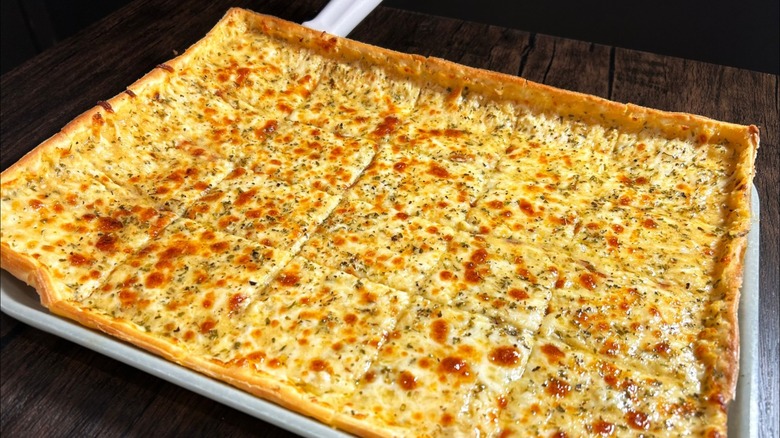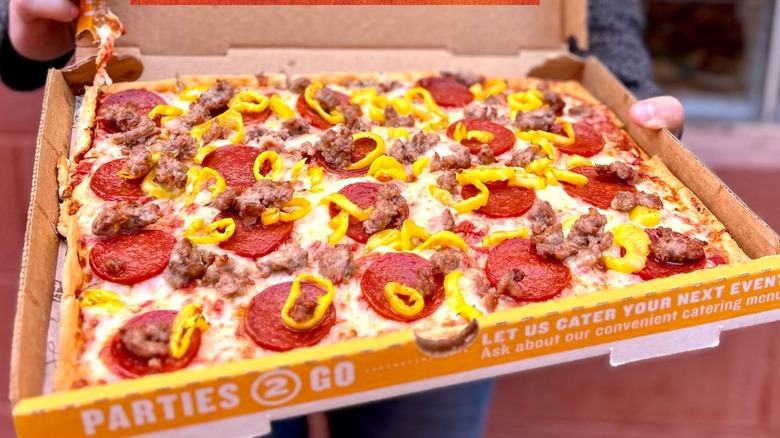What Makes Maryland-Style Pizza Unique?
Famous for its blue crabs and Old Bay seasoning (which you can even find on ice cream), Maryland boasts an eclectic food scene. One lesser-known but locally beloved creation is Maryland-style pizza. Unlike the state's seafood staples, this regional speciality has a fascinating identity of its own. To find out what makes it unique, Food Republic consulted Sam Ellis, food photographer and recipe developer at The Culinary Compass – and native Marylander.
"When most people say Maryland-style pizza, they mean Ledo Pizza[,] which is a local favorite since the 1950s," Ellis explained. Founded in 1955 and headquartered in Maryland, Ledo Pizza has grown into a regional chain boasting over 100 locations. "It grew out of the state's family-dining roots and Mid-Atlantic mix of Italian influences," Ellis told us. "The square pans made it practical, while the sweet-savory flavor profile reflected local tastes."
"It's got a delicious flaky, square-cut crust, sweet tomato sauce, and thick slices of provolone cheese instead of shredded mozzarella," Ellis explained. This style sets it apart from other regional varieties. "Where New York pizza is foldable and chewy and Chicago pizza is deep and doughy, Ledo's version sits right in between being crispy and buttery," Ellis told us. This unique quality makes it feel more like a layered (or, if you're a chef, "laminated") pastry than a traditional pizza dough –- making it a distinctive (yet still delicious) addition to America's pizza-making canon. One element of Ledo Pizza that keeps Maryland-style pizza in line with its more traditional counterparts is its toppings, which feature thick-cut pepperoni, hot honey, and even the more controversial pineapple.
What gives Maryland-style pizza its distinctive texture and flavor.
Maryland-style pizza, specifically Ledo Pizza, was beloved by the likes of Frank Sinatra and the Rolling Stones. The secret to its enduring popularity lies in its unique dough and toppings — although Marylanders' unrivalled love of fast food might have something to do with it, too. According to Ledo Pizza's website, the signature flaky crust comes from the way it's prepped: The dough is prepared fresh, rolled out when the order is placed, and kept super thin. Because the "dough is rolled instead of tossed[,] it bakes into a buttery, layered crust that's crisp but not brittle," Sam Ellis told us. Hand-tossing and stretching is a classic technique to preserve the gas bubbles formed during fermentation, which expand in the oven and form a fluffy, flavorful base. On the other hand, rolling pizzas pushes out these gas bubbles. When baked, the result is a thinner and flakier crust.
"The provolone melts into a creamy, almost silky layer rather than a stretchy pull, and the slightly sweet sauce brings everything together," Ellis added. It might not have the classic cheese-pull, but it delivers richer, much more intense flavors. There are two styles of provolone out there: dolce (sweet), piccante (hot — but it's just a bit drier), both of which can be smoked. At Ledo's, they go for smoked-style, which adds a smoky aroma to all their pizzas.


